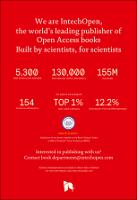Chapter Emerging Techniques for Assessment of Sensorimotor Impairments after Spinal Cord Injury
Author(s)
Barroso, Filipe O.
Moreno, Juan
Torricelli, Diego
Language
EnglishAbstract
Mechanical properties of the plantar soft tissue, which acts as the interface between the skeleton and the ground, play an important role in distributing the force underneath the foot and in influencing the load transfer to the entire body during weight-bearing activities. Hence, understanding the mechanical behaviour of the plantar soft tissue and the mathematical equations that govern such behaviour can have important applications in investigating the effect of disease and injuries on soft tissue function. The plantar soft tissue of the foot shows a viscoelastic behaviour, where the reaction force is not only dependent on the amount of deformation but also influenced by the deformation rate. This chapter provides an insight into the mechanical behaviour of plantar soft tissue during loading with specific emphasis on heel pad, which is the first point of contact during normal gait. Furthermore, the methods of assessing the mechanical behaviour including the in vitro/in situ and in vivo are discussed, and examples of creep, stress relaxation, rate dependency and hysteresis behaviour of the heel pad are shown. In addition, the viscoelastic models that represent the mechanical behaviour of the plantar soft tissue under load along with the equations that govern this behaviour are elaborated and discussed.
Keywords
mechanical behaviour, plantar soft tissue, force-deformation, barefoot, viscoelastic models, finite element analyses, stress-strain, mathematical model, plantar pressureDOI
10.5772/64182Publisher
InTechOpenPublisher website
https://www.intechopen.com/Publication date and place
2016Classification
Polymer chemistry


 Download
Download